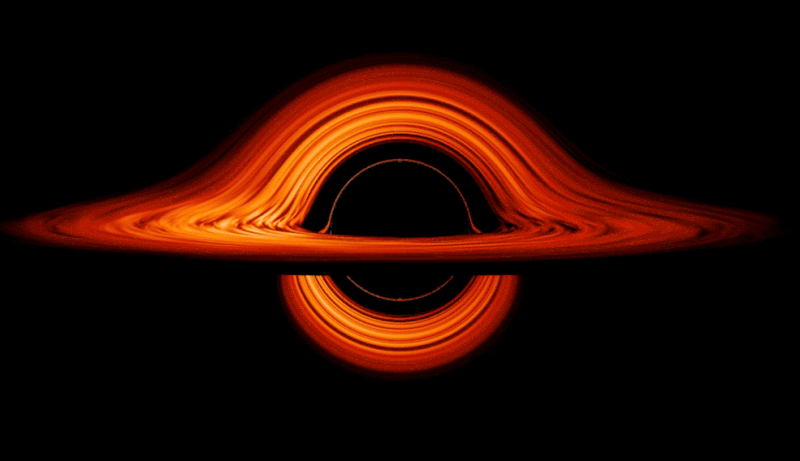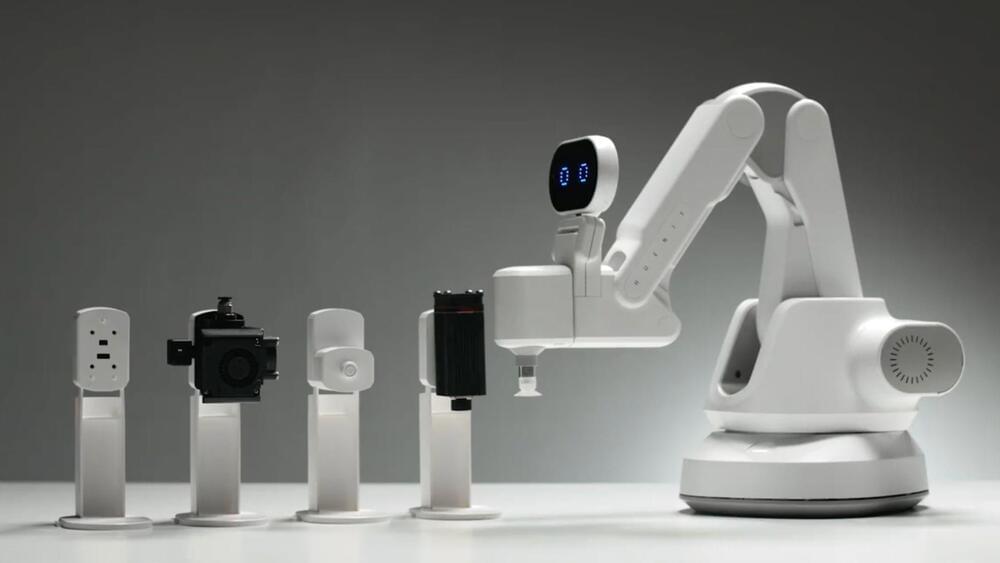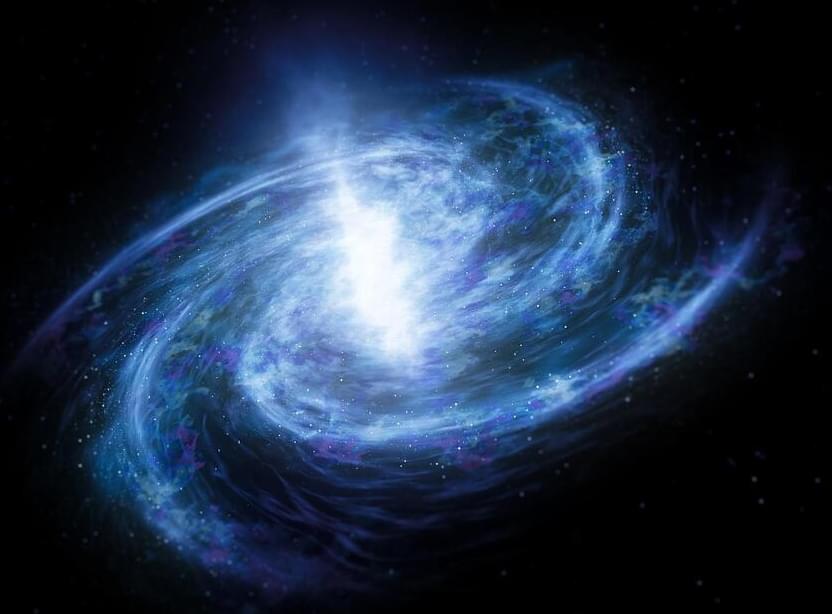Though a single measurement is not enough to definitively decide the debate, this is a major win for dark matter proponents.



Sam Baron, Australian Catholic University.
Black holes form natural time machines that allow travel to both the past and the future. But don’t expect to be heading back to visit the dinosaurs any time soon. At present, we don’t have spacecraft that could get us anywhere near a black hole. But, even leaving that small detail aside, attempting to travel into the past using a black hole might be the last thing you ever do.

Neutron stars and black holes may be stellar corpses, but they are among the most active celestial objects. They produce some of the highest-energy radiation ever observed, and scientists have long puzzled over the physics that underlies the process powering their energetic emissions.
Now, in a recent paper published in Physical Review Letters, a Dartmouth physics major and an assistant professor have proposed a new theory that explains how magnetic energy can be very quickly released with explosive energy into charged particles in these extreme environments.
Similar magnetic explosions also occur closer to home, setting off solar flares and the Northern Lights. They can be observed wherever charged gases, called plasma, are found—even in a lab, says Matthew Goodbred ‘23, the paper’s lead author.

Using NASA’s Fermi spacecraft, Chinese astronomers have investigated the variability and spectral behavior of gamma-ray flares in a distant blazar known as 3C 279. Results of the study, presented in a paper published in the Publications of the Astronomical Society of the Pacific, could help researchers better understand the flaring activity of blazars.
Blazars are very compact quasars associated with supermassive black holes at the centers of active, giant elliptical galaxies. Based on their optical emission properties, astronomers divide blazars into two classes: flat-spectrum radio quasars (FSRQs) that feature prominent and broad optical emission lines, and BL Lacertae objects (BL Lacs), which do not.
At a distance of about 5 billion light years, 3C 279 is an FSRQ with an estimated black hole mass of 300–800 million solar masses. It is a bright and powerful gamma-ray source in the high–energy sky and is known as the first blazar showing strong and rapid variability at GeV energies.

It can also rotate 220 degrees and lift up to 26.5 ounces of weight.
Supernova, a South Korean startup, has designed HUENIT, a robotic arm to help people with various household chores and creative tasks. Supernova showcased its AI Camera and Robot Arm at CES 2023. The company has been developing innovative robots to help people with everyday tasks.
Although many innovative technologies were showcased at the CES 2023, the Huenit Robot Arm captured the attention of visitors. HUENIT is an easy-to-use AI-based multi-functional robotic arm that combines advanced AI technologies with a modular arm to work on complex tasks with high precision. The robot can do everything from making coffee to 3D printing a prototype.
In mathematical physics, a closed timelike curve (CTC) is a world line in a Lorentzian manifold, of a material particle in spacetime, that is “closed”, returning to its starting point. This possibility was first discovered by Willem Jacob van Stockum in 1937[1] and later confirmed by Kurt Gödel in 1949,[2] who discovered a solution to the equations of general relativity (GR) allowing CTCs known as the Gödel metric; and since then other GR solutions containing CTCs have been found, such as the Tipler cylinder and traversable wormholes.
Yes, dark energy is real. Yes, distant galaxies recede faster and faster as time goes on. But nthe expansion rate isn’t accelerating at all.

The so-called “Father of the Atomic Bomb” J. Robert Oppenheimer was once described as “a genius of the nuclear age and also the walking, talking conscience of science and civilization”. Born at the outset of the 20th century, his early interests in chemistry and physics would in the 1920s bring him to Göttingen University, where he worked alongside his doctoral supervisor Max Born (1882−1970), close lifelong friend Paul Dirac (1902−84) and eventual adversary Werner Heisenberg (1901−76). This despite the fact that even as early as in his youth, Oppenheimer was singled out as both gifted and odd, at times even unstable. As a child he collected rocks, wrote poetry and studied French literature. Never weighing more than 130 pounds, throughout his life he was a “tall and thin chainsmoker” who once stated that he “needed physics more than friends” who at Cambridge University was nearly charged with attempted murder after leaving a poisoned apple on the desk of one of his tutors. Notoriously abrupt and impatient, at Göttingen his classmates once gave their professor Born an ultimatum: “either the ‘child prodigy’ is reigned in, or his fellow students will boycott the class”. Following the successful defense of his doctoral dissertation, the professor administering the examination, Nobel Laureate James Franck (1882−1964) reportedly left the room stating.
“I’m glad that’s over. He was at the point of questioning me”
From his time as student at Harvard, to becoming a postgraduate researcher in Cambridge and Göttingen, a professor at UC Berkeley, the scientific head of the Manhattan project and after the war, the Director of the Institute for Advanced Study, wherever Oppenheimer went he could hold his own with the greatest minds of his age. Max Born, Paul Dirac, John von Neumann, Niels Bohr, Albert Einstein, Kurt Gödel, Richard Feynman, they all admired “Oppie”. When he died in 1967, his published articles in physics totaled 73, ranging from topics in quantum field theory, particle physics, the theory of cosmic radiations to nuclear physics and cosmology. His funeral was attended by over 600 people, and included numerous associates from academia and research as well as government officials, heads of military, even the director of the New York City Ballet.

Although dark matter is a central part of the standard cosmological model, it’s not without its issues. There continue to be nagging mysteries about the stuff, not the least of which is the fact that scientists have found no direct particle evidence of it. Despite numerous searches, we have yet to detect dark matter particles. So some astronomers favor an alternative, such as Modified Newtonian Dynamics (MoND) or modified gravity model. And a new study of galactic rotation seems to support them.
The idea of MoND was inspired by galactic rotation. Most of the visible matter in a galaxy is clustered in the middle, so you’d expect that stars closer to the center would have faster orbital speeds than stars farther away, similar to the planets of our solar system. We observe that stars in a galaxy all rotate at about the same speed. The rotation curve is essentially flat rather than dropping off. The dark matter solution is that galaxies are surrounded by a halo of invisible matter, but in 1983 Mordehai Milgrom argued that our gravitational model must be wrong.
I’ve looked at quite a few of the Planck base units, and I’ve even worked them out mathematically, but today I’m going to look at one of the derived units and I’ll compare it to some other things to see how big or small this is. Today then I’m going to be looking at the Planck Density. Let’s find out more.
Before we start, we need to know what density is. Density is a measure of how tightly packed a material is. In other words, how much stuff is packed into a certain volume of space.
To work out density then we need a formula, and units. To work out density we use the following formula, density and that is denoted by the greek letter rho equals mass divided by volume. The SI unit of density is kilograms per metre cubed. So now that we know what density is and we have our units, time to see how dense different materials are and then compare that to the Planck density, which is very dense indeed. At the end I’ll show you where the numbers come from. We’ll start off by looking at some very un dense things and work our way up.
Video where I derive the Planck units mathematically.
Chapters.
0:00 Introduction.
0:15 What is Density?
1:30 The Density of Space.
3:05 Air Density.
4:05 Saturn.
4:45 Water.
5:23 The Planets.
7:18 Metals.
9:07 Stellar Objects.
13:40 The Planck Density